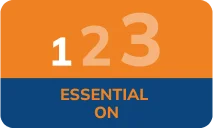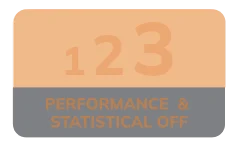THE
ORANGE
HUB
RBI's Education Loan Guidelines: Key Insights for Students

The Reserve Bank of India (RBI) is the central bank that is responsible for overseeing the working of banks in the country. RBI also keeps a check on resources related to lending and issues guidelines that can help applicants get maximum benefits. Currently, the RBI’s Model Education Loan Scheme (MELS), 2022 provides broad guidelines for banks to follow when giving Education Loans to students. These guidelines help ensure that higher education becomes accessible to more students. In this blog post, we will discuss RBI’s Education Loan guidelines (i.e. MELS, 2022) in detail.
Understanding RBI's Education Loan Guidelines, i.e., the Model Education Loan Scheme (MELS), 2022
1. Benefits for Meritorious Students and Prestigious Colleges
RBI encourages banks in India to offer maximum benefits to students who have an excellent academic record or have secured admission into top-tier institutions. These benefits might include higher loan limits, reduced interest rates and faster processing and approval times. This approach ensures that no deserving student is held back by financial constraints. Students with a good academic background have a better chance of receiving financial support under favourable terms.
2. Collateral Requirements Explained
Another key guideline relates to collateral, which is often decided depending on the loan amount. As per RBI, there is no need for any collateral or security for Education Loans up to ₹ 4 lakh. Loans between ₹ 4 lakh and ₹ 7.5 lakh must be backed by a guarantor. For loans above ₹ 7.5 lakh, collateral is necessary, which may include property, Fixed Deposits or other financial assets. This guideline is to be interpreted by banks as per their policies and is not mandated by the RBI. ICICI Bank provides collateral-free loans up to ₹ 1 crore for students aspiring for higher education at select institutes in India and abroad, based on their eligibility.
3. Moratorium Period for Loan Repayment
The RBI’s Model Education Loan Scheme, 2022 recommends a moratorium period before the loan repayment begins. This is to give students time to find employment after completing their studies. This period often ranges from 6 months to 1 year after the course ends. During this time, students are not required to repay the principal, though some banks can ask for partial or simple interest payments. This relief helps students focus on building their careers without the pressure of immediate repayments.
4. Tax Benefits on Education Loans
Students can avail tax benefits on Education Loans under Section 80E of the Income Tax Act. Under this section, the interest paid on an Education Loan is eligible for full deduction from the taxable income. There is no cap on the deduction amount, but the benefit is limited to the interest portion of the loan. This tax benefit is available for up to 8 years and can be claimed by individuals who have availed the loan for their own, spouse’s or children’s education.
5. Revised Interest Rates
Education Loan interest rates are now more transparent and are linked to an External Benchmark Lending Rate (EBLR). Banks often use the Repo Rate as the external benchmark rate and add a bank-specific spread based on the borrower’s risk profile to arrive at the final interest rate. The cut in the Repo Rate in June 2025 to 5.5% has made Education Loans more affordable.
6. Flexible Repayment Options
Banks offer multiple options to reduce the repayment burden. Full Moratorium allows no repayment during the course and the moratorium period. PSI (Partial Simple Interest) and SI (Simple Interest) options let students pay all or some of the interest portion of the Loan during the course. EMIs begin after the moratorium period and students can choose the plan that fits their financial comfort.
7. Better Grievance Redressal
Students can approach the Banking Ombudsman under the RBI’s Integrated Ombudsman Scheme if they face issues with loan applications or repayments and do not get a resolution from their bank. If a bank fails to resolve a complaint within 30 days, students can lodge a complaint online through the RBI Complaint Management System (CMS) or submit a physical complaint. This ensures that students are treated fairly and can escalate unresolved issues.
8. Simplified Loan Application Process
Applying for an Education Loan has become more streamlined. Today, banks require documents like proof of admission, academic records, income documents of the co-applicant, KYC documents and collateral details if applicable. ICICI Bank now offers a fully online application process and quick approvals for eligible students.
9. Loan Amount
While MELS, 2022 does include indicative upper limits for loan amounts in India and abroad, they are not mandated. The RBI encourages banks to offer Education Loans that cover the full cost of studies for eligible students. If you are availing an Education Loan from ICICI Bank, you can get a loan of up to ₹ 3 crore for studies abroad and up to ₹ 2 crore for studies in India. Banks determine the loan amount based on course duration, university’s reputation, expected expenses and the co-applicant’s income.
10. Role of Co-Applicants and Guarantors
A co-applicant is essential for most Education Loans. The co-applicant shares the responsibility of repayment if the student is unable to repay the Loan. Generally, co-applicants are parents, siblings or legal guardians. A strong co-applicant with a good income and credit score can improve loan approval chances and get better loan terms.
Conclusion
RBI’s current Education Loan guidelines aim to simplify the borrowing process and make higher education accessible to more Indian students. Whether you're planning to study in India or abroad, these guidelines bring transparency, better terms and added protection.
Understanding these guidelines and preparing necessary documents in advance can boost your chances of loan approval. Understand the interest rates, repayment plans and tax benefits for the loan before making a decision. If any issues arise, use the grievance redressal mechanism of the bank (and RBI’s Banking Ombudsman, if required) to resolve them efficiently. With informed planning and the right financial support, students can turn their academic dreams into reality.
For disclaimer, Click Here.
Scroll to top









